| Draft a motion for summary judgment |
Draft a motion for summary judgment in which Company A claims that Company B has breached their contract by not fulfilling the services agreed upon in the contract. The breach of contract has caused $2 million in damages to Company A. Company A has the signed contract outlining the agreed upon services, the email correspondence and documents that clearly demonstrate Company B’s failure to deliver the services, and financial records showing direct losses that incurred because of the breach. |
Select text and use the Drafting Tool to simplify, condence, expand, or redraft parts of the motion
Go into the motion and edit Protégé's response directly in the tool by adding, removing, or rewriting the response |
| Draft a motion for injunctive relief |
Draft a motion for injunctive relief to stop the use of a jingle that my client - Mr. John Smith - has created. |
Select text and use the Drafting Tool to simplify, condence, expand, or redraft parts of the motion
Go into the motion and edit Protégé's response directly in the tool by adding, removing, or rewriting the response |
| Draft a motion to dismiss |
Draft a motion to dismiss for a case based on an expired statute of limitations. My client is being sued for his role in a car accident that occurred 3 years ago, and the Plaintiff has not filed a lawsuit before the statute of limitations expired. Both my client's and the Plaintiff's insurance companies has been sending letters to the Plaintiff informing the Plaintiff of his rights as well as of the statute of limitations for his case. |
Select relevant jurisdiction
Add details arguing the position to dismiss the case
Amend the draft text using Drafting Tools and manual edits |
| Draft a partnership agreement for a small business |
Draft a partnership agreement between two individuals starting a small business, including capital contributions, profit sharing, and dispute resolution clauses. |
Select relevant jurisdiction
Add details
Amend the draft text using Drafting Tools and manual edits |
| Draft corporate bylaws |
Create corporate bylaws for a newly incorporated private company in Toronto. Include provisions on director responsibilities, shareholder meetings, quorum requirements, and electronic voting in compliance with the Ontario Business Corporations Act |
Select text and use the Drafting Tool to simplify, condence, expand, or redraft parts of the motion
Go into the motion and edit Protégé's response directly in the tool by adding, removing, or rewriting the response |
| Draft an employment agreement |
Draft an employment agreement for a Chief Operating Officer (COO) for a software company based in Waterloo, Ontario. Please be sure to include a double trigger clause in the event of change of control. |
Select text and use the Drafting Tool to simplify, condence, expand, or redraft parts of the motion
Go into the motion and edit Protégé's response directly in the tool by adding, removing, or rewriting the response |
| Draft an email to a client outlining the consequences of non-compliance with a a specific legal matter |
My clients are thinking about importing a protected species from Indonesia into Canada. Draft an email message that outlines what happens when an individual attempts to illegally export a protected species from Indonesia and import that protected species into Canada. Include information on possible penalties. |
Rewrite the email message adding two sentences explaining to the client that lack of awareness Canadian laws and regulations does not excuse a person from legal liability. |
| Draft a letter to a party that is in breach of my client's rights |
Please draft a cease and desist letter to a musician who used a 10-second sample of my client's song in one of his songs that was published on streaming service. Indicate that this is a breach of copyright and demand that the musician's song be immediately taken down from the streaming service. |
Soften tone |
| Generate descriptions that help to explain complex legal concepts to a client who has no technical or legal education |
Provide me a legal memo that explains the concept of net present value that would be suitable for someone with no financial background |
|
| Draft an outline for a presentation that I am making on a legal topic to a local community group |
I am a lawyer making a presentation to a senior's group. They want to know about the power of attorney and representation agreement. Draft a very detailed outline for a presentation on this topic. Jurisdiction: British Columbia |
Can you change this memo format to an outline format instead? |
| Craft an argument for a sentence leniency for my client |
I am a defense attorney representing a client, Mary Johnson, who has been found guilty of theft of goods under $5,000 on summary conviction. Mary is a first-time offender and has shown genuine remorse for her actions. She has also taken proactive steps to make amends, including attending a theft prevention program and volunteering at a local community center. Additionally, she is a single parent and the primary caregiver for their two young children. Draft a legal argument for sentence leniency by the judge. |
What documentation could be gathered to support Mary's case for sentence leniency in front of the court? |


